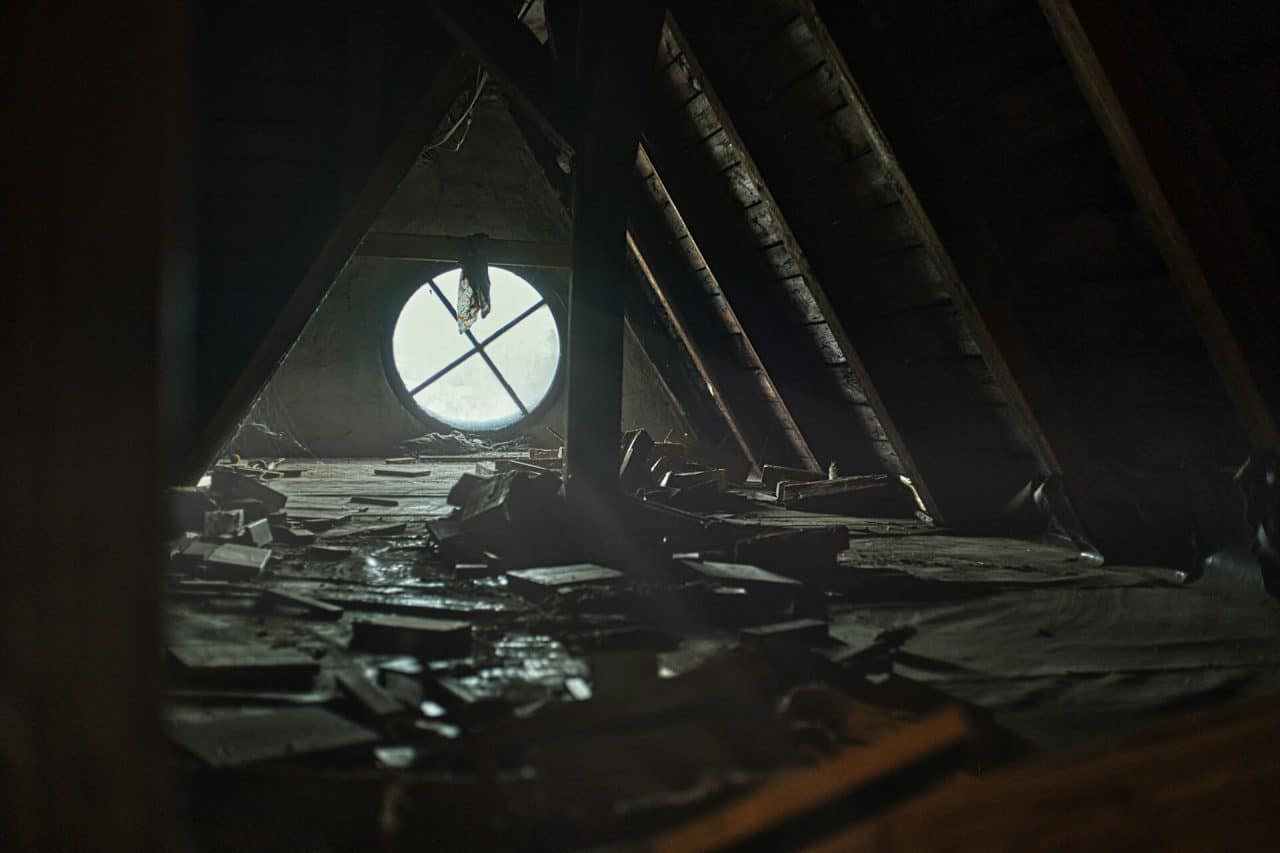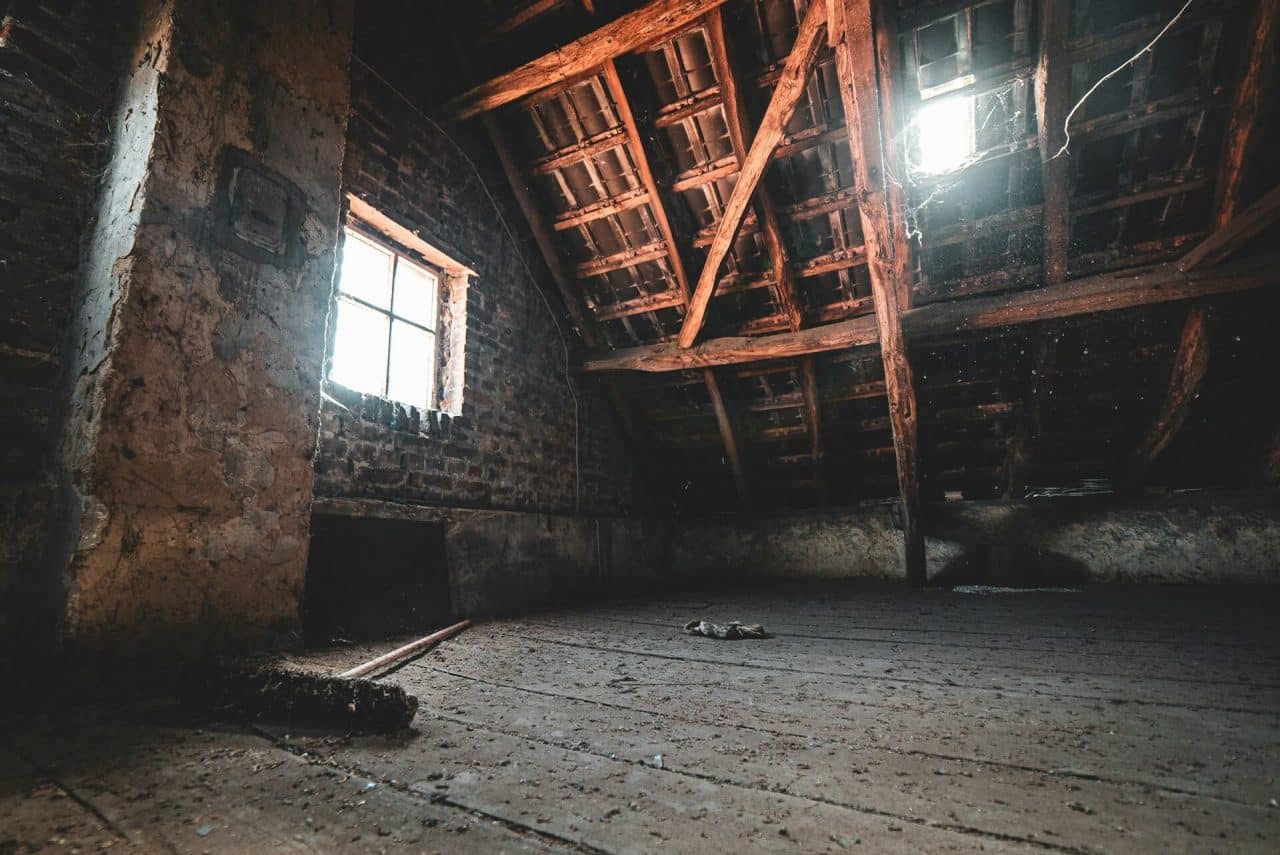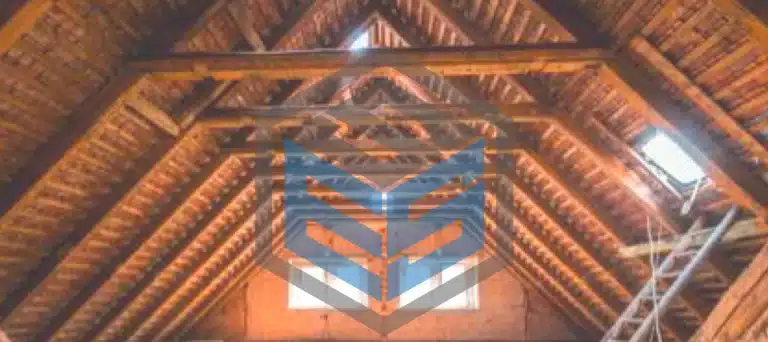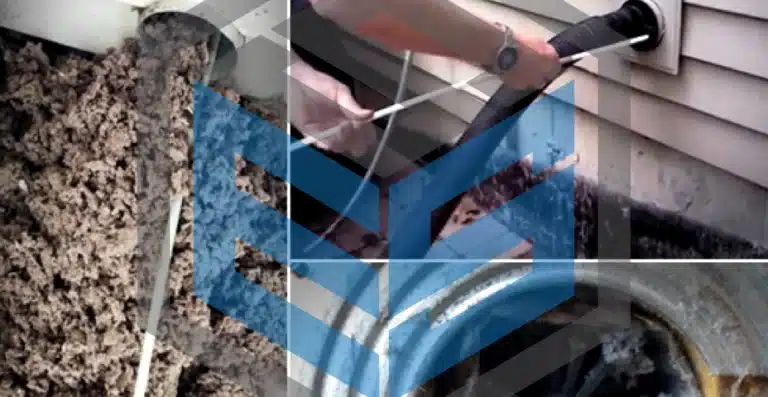Attic condensation is one of the most common problems reported by homeowners across the US, but it is especially a problem in areas with frequent rain and temperature fluctuations.
Often confused with a roof leak before further inspection, attic condensation typically happens in winter and early spring, when the warm air from your home collides with cold air from the outside or a cold surface, like your roof. The cold freezes the moisture in the attic, which usually shouldn’t cause you any problems until later on, when it starts to melt.
While moisture in the attic can be somewhat normal, as attics can be susceptible to moisture buildup due to temperature and humidity changes. However, excessive moisture in the attic can damage the roof, insulation, and other structural components.
In this article, we’ll discuss the main signs of moisture in attic as well as how to get rid of attic condensation.
Key Takeaways
- Attic condensation typically happens when the moist air from the lower parts of your home comes into contact with colder air or surface in the attic, causing the air to liquidate.
- Several signs could indicate an attic condensation problem, including moldy smell, ice buildup, rust, and wet insulation.
- There could be several reasons for attic condensation, including poor insulation, air leaks, or using a humidifier.
- The most effective way to get rid of moisture in attic is to address the problem causing it directly.
How To Identify Moisture in Attic?
One of the most telltale signs of moisture in attic is the musky smell – often appearing even when, at first glance, there seems to be no moisture in your attic.
If there is no smell in your attic space, but you still suspect moisture issues, here are some other things you can do to confirm that attic condensation is what you’re dealing with:
- Check for ice buildup or frost across the roofing nails. If there is ice, then you have an attic condensation problem.
- Check for rust. Usually, the first to rust will be the roof nails inside the attic.
- Look for dark stains on the roof boards or drip marks on the attic floor and insulation – those are other indicators of moisture in the attic.
- Check the roof sheathing for moisture.
- Simply touch your attic’s insulation. If it feels wet, you might have a problem with attic condensation.
- Check for the onset of mold in the attic – it’s a sign that there are problems with humidity.
All these are signs of moisture in attic. Once you establish that attic condensation is, in fact, the problem, you need to figure out what caused moisture in attic to appear in the first place.

How Does Attic Moisture Enter the Attic?
When it comes to what causes condensation in attic, there are a few answers. In most cases, it happens when warm, moist air from inside the home rises into the attic, where it becomes colder, like when it reaches the underside of the roof or the attic floor. The warm, moist air gradually condenses into water droplets, damaging the attic and the rest of the home if left unchecked.
Some common ways that warm, moist air can enter the attic include but are not limited to the following:
Inadequate Attic Insulation
Poor insulation is the most common reason for condensation. If the insulation in the attic is insufficient or damaged, it allows warm air to escape from the living space below and enter the attic. As soon as that happens, you have a condensation problem. Properly insulating the attic is pivotal in preventing moisture in attic.
Poor Ventilation
If there isn’t enough ventilation in the attic, it can become too hot and humid, creating the ideal environment for condensation. You will want to work with an expert builder to find ways to improve the ventilation in the attic.
Air Leaks
Gaps and cracks in the ceiling or walls of the home can allow warm, moist air to get into the attic. This can lead to issues not only in the attic but in other parts of your home as well. Not to mention that aside from moisture, air leaks can result in higher energy bills, especially if you have an HVAC system, as it needs to work harder for the same results.
There could be several reasons for air leaks, from poor attic insulation to your house’s age, but whatever the case is, it’s important that the leaks are sealed as soon as you discover them.
Humidifiers
Do you have humidifiers in your home? They can release excess moisture into the air, which rises into the attic. While we aren’t against using humidifiers, your attic needs to be properly insulated so that air from the device does not reach it.
Can Moisture Also Rise from the Basement?
It is possible for moisture to rise from the basement during winter when the heating system is turned on. If there is water in between where the heating system is located and the attic, it turns into steam and goes into the attic, where it condenses into water droplets.

It is worth noting that moist air is far less dense than regular dry air; this makes it easier to escape through any small holes and cracks in the attic walls and floors. If the upper floors of your home aren’t properly sealed, the air will escape, and that will decrease the home pressure. When stacked together, the negative pressure and buoyancy of the air will cause the warm, moist air to reach the roof deck, which is cooler. This is where the cold air will start condensing back into water.
Common areas from where air could escape are:
- Unsealed access to the attic
- Gaps in the interior or the exterior wall
- The pull-down stairway to the chimney
- Holes made for plumbing and electrical work
Air infiltration leads to heat loss, which also means the cost of heating your home increases. This is one reason you will notice inflated bills, in addition to a moisture build-up in your attic. So, the best way to remedy the situation would be to reduce air leakage.
How To Remove Moisture From Attic
Removing moisture from the attic involves a few steps, but overall, it’s a pretty straightforward process:
- Identify what caused the condensation – Different culprits need to be dealt with in different ways, so your course of action will depend on what caused the moisture. This is also when you inspect the area, in this case, the attic, that has been affected by moisture and remove everything that has been compromised by it.
- Address the source – Getting rid of moisture will be pointless if you don’t address its source. Whether it’s sealing the leaks, improving ventilation, or fixing holes caused by plumbing or electrical work, you need to take care of it so that condensation does not come back (but more about it later).
- Get rid of moisture in your attic – One of the most effective solutions to getting rid of moisture from any space is using a dehumidifier. However, this will not fix the problem in the long term, which is why addressing the source of moisture in your attic cannot be avoided.
- Monitor your attic – Regularly checking your attic will help you prevent moisture from appearing in the future. At the very least, you should be checking your attic twice a year.
What if the Moisture in Attic Has Already Resulted in Mold?
Mold in the attic or any other area of your home can be dangerous, which is why it’s important that you address the issue as soon as you discover it, ideally with the help of professional mold remediation services.
Getting Rid of Attic Condensation for Good
Usually, getting rid of attic condensation for good requires a multi-step approach that addresses the root cause or, more accurately, causes of the problem, as typically there is more than one reason for attic condensation; thus, a multi-pronged approach is the best way to eliminate the problem for good.
Here are some steps you can take:
Insulate Your Property
Proper insulation is key in keeping your attic warm and dry. Check the attic’s insulation for any damage or missing pieces. The type of attic insulation, as well as how much of it you will need, depends on your home’s age and the prevailing climate. Ideally, you will want to work with an insulation specialist to find and install the right one.
Seal Air Leaks
Air leaks in your attic allow warm and moist air from your living space to enter the attic, leading to condensation. Seal any gaps or cracks in your attic floor, ceiling, walls, and around vents. You also want to seal off all pipes using caulk or foam insulation. In addition, make sure to check for roof leaks and seal them, too.
Control Humidity
High humidity levels can contribute to condensation in the attic. This is especially true if you live in an area that’s wet most of the year. Ideally, you should keep humidity in attic between 20% and 50%, keeping in mind that the lower the outside temperatures are, the lower the humidity level your house needs to keep to avoid condensation. This will prevent excess moisture from accumulating, as well as the growth of mold and mildew.
Use a dehumidifier to reduce humidity levels – you can use a manual one, but it will require constant adjustment due to temperature changes – and avoid using humidifiers excessively.
Address Any Roofing and Plumbing Issues
Water leaks from your roof or plumbing system can contribute to attic moisture. Usually, floor moisture can rise up when the heating system is running and enter the attic. Ensure your roof is in good condition and immediately repair any leaks or damage. Make it a point to inspect your plumbing system regularly, but address any leaks or issues immediately.







